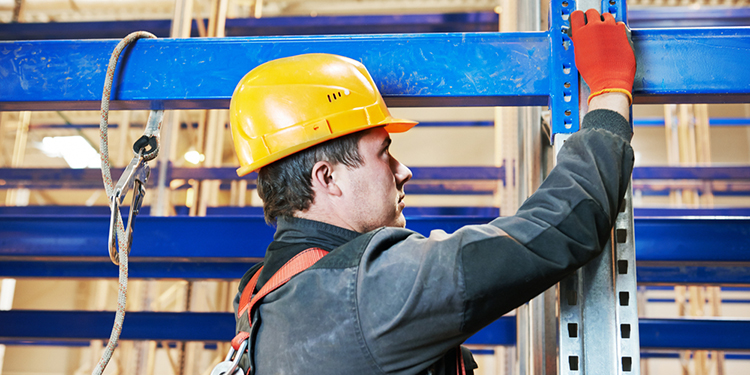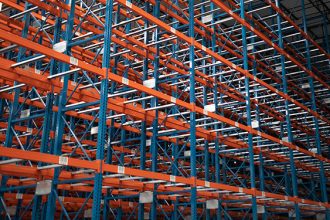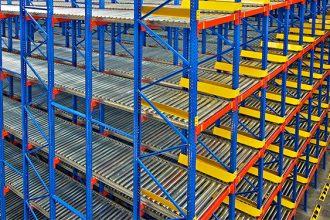Beware Of Leaning Or Bowed Pallet Rack Columns

While some column distortion may be acceptable in a loaded industrial steel pallet rack structure, if a column is leaning (out-of-plumb) or bowed (out-of-straight) beyond a certain point, its capacity will be significantly reduced. Those conditions are unsafe and increase the risk of a rack collapse. But how much column distortion is too much? The answer is found in RMI’s ANSI MH16.1: Specification for the Design, Testing and Utilization of Industrial Steel Storage Racks.
The specification defines the severity of these two conditions as follows:
- Out-of-Plumb Ratio – Maximum horizontal distance (inches or millimeters) from the centerline of the column at the floor to a plumb line that extends downward from the centerline of the column at the top shelf elevation divided by the vertical distance (feet or meters) from the floor to the top shelf elevation.
- Out-of-Straight Ratio – Maximum horizontal distance (inches or millimeters) from the centerline at any point on the column to a plumb line from any other point on the column divided by the vertical distance (feet or meters) between the two points.
As explained in ANSI MH16.1’s section 1.4.11, the higher the ratio of either distortion, the more likely the rack is to fail. The specification limits the ratio for both out-of-plumb and out-of-straight loaded rack columns to 1/240. This equates to 0.05-inch per 1 foot of height (1.25 millimeters per 0.3-meter), or 0.5-inch per 10 feet (12.5 millimeters per 3 meters) of height.
The limits are intended to prevent excessive bows or dogleg conditions that may exist in rack columns. For example, a column could be plumb from top to bottom, but have an excessive bow (out-of-straight) in the middle. Alternately, a 20-foot-tall column might be out-of-plumb 1-inch from top to bottom. This would be acceptable unless the entire out-of-plumb condition is solely between the floor and the 5-foot level, referred to as a dogleg (commonly caused by a fork truck impact).
Other causes of out-of-plumb and out-of-straight conditions include:
- Beam height adjustments or alterations out of compliance with load application and rack configuration drawings (LARC)
- Improper beam-to-column connections
- Loose bolts that weren’t tightened enough during installation
- Impacts with machinery or pallets as loads are moved to and from the racking
To ensure that columns are neither leaning nor bowing too far beyond the limit recommended by ANSI MH16.1, inspect the rack structure routinely using tools such as a plumb bob, long level or laser line. If such a condition is discovered for bolted racking, it should be immediately corrected by first unloading the rack, then loosening the column bolts prior to straightening them, then re-tightening the bolts. If the leaning or bowing is not corrected, then it may be necessary to replace or repair some of the components. Beam connectors should also be inspected to ensure that the deformation has not caused them to bend or otherwise deform.
Looking for more guidance on how to determine if rack columns are straight and plumb? Purchase the RMI/ANSI MH16.1: Specification.


